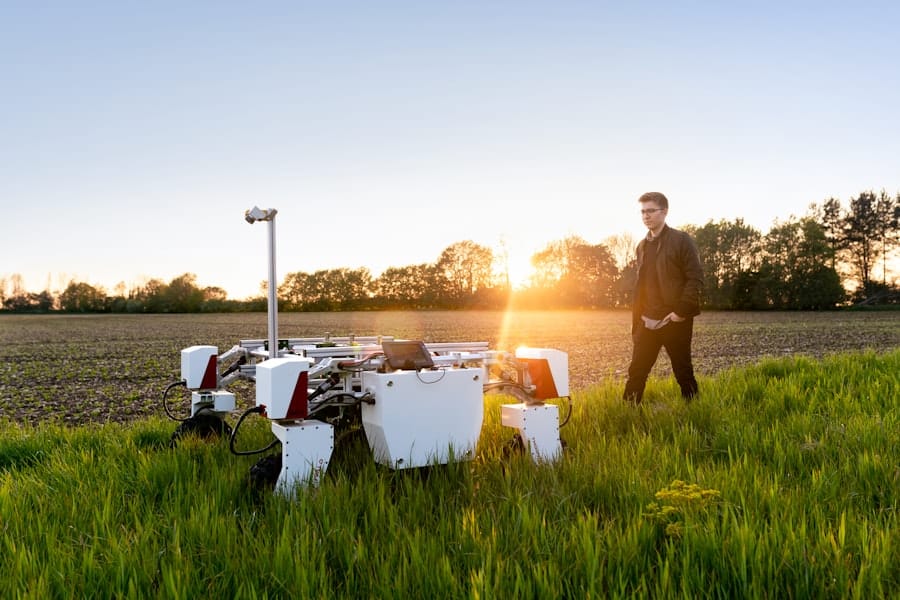In recent years, many industries have faced significant worker shortages, a phenomenon that has been exacerbated by various factors including demographic shifts, changing workforce expectations, and the aftermath of global events such as the COVID-19 pandemic. The labor market has seen a notable decline in available workers, leading to increased competition among employers to attract and retain talent. This shortage is particularly pronounced in sectors such as healthcare, manufacturing, and hospitality, where the demand for skilled labor continues to outpace supply.
The reasons behind these worker shortages are multifaceted. Aging populations in developed countries have resulted in a shrinking workforce, while younger generations often seek different work-life balances and career paths that may not align with traditional roles.
Additionally, the pandemic has prompted many individuals to reevaluate their career choices, leading to a significant number of resignations and a reluctance to return to pre-pandemic jobs. This shift has created a pressing need for innovative solutions that can help bridge the gap between labor demand and supply, prompting industries to explore alternative avenues for addressing these shortages.
Key Takeaways
- Worker shortages are a growing concern in many industries, leading to the exploration of robotics as a solution.
- Robotics can address worker shortages by automating repetitive tasks and increasing productivity in the workplace.
- Advantages of using robotics in the workplace include improved efficiency, reduced labor costs, and enhanced safety for workers.
- Challenges of implementing robotics include high initial costs, potential job displacement, and the need for retraining employees.
- Successful integration of robotics in industries can be seen in manufacturing, healthcare, and logistics, among others, showcasing the potential of robotics in addressing worker shortages.
The Role of Robotics in Addressing Worker Shortages
Robotics has emerged as a pivotal solution in addressing the challenges posed by worker shortages. By automating repetitive and labor-intensive tasks, robots can alleviate some of the pressure on human workers, allowing them to focus on more complex and value-added activities. In sectors like manufacturing, where precision and efficiency are paramount, robots can operate around the clock without fatigue, significantly enhancing productivity levels.
This capability not only helps companies maintain output during times of labor scarcity but also enables them to scale operations more effectively. Moreover, the integration of robotics into various industries can lead to the creation of new job opportunities. While there is a common fear that automation will replace human jobs, the reality is that robotics often complements human labor rather than entirely substituting it.
For instance, in warehouses and distribution centers, robots can handle inventory management and order fulfillment, freeing up human workers to engage in customer service or strategic planning roles. This symbiotic relationship between humans and machines can lead to a more efficient workforce that is better equipped to meet the demands of a rapidly changing economy.
Advantages of Using Robotics in the Workplace

The advantages of incorporating robotics into the workplace are numerous and varied. One of the most significant benefits is increased efficiency. Robots can perform tasks with a level of speed and accuracy that far exceeds human capabilities.
For example, in automotive manufacturing, robotic arms are used for welding and assembly processes, completing tasks in a fraction of the time it would take a human worker while ensuring consistent quality. This efficiency not only boosts production rates but also reduces operational costs over time. Another advantage is enhanced safety in the workplace.
Many industries involve hazardous tasks that pose risks to human workers, such as heavy lifting or exposure to toxic substances. By deploying robots to handle these dangerous activities, companies can significantly reduce workplace injuries and create a safer environment for their employees. In construction, for instance, drones are increasingly used for site inspections and monitoring, minimizing the need for workers to navigate potentially perilous conditions.
This shift not only protects workers but also fosters a culture of safety that can enhance employee morale and retention.
Challenges and Concerns of Implementing Robotics
Despite the clear advantages of robotics in addressing worker shortages, there are several challenges and concerns associated with their implementation. One major issue is the initial cost of acquiring and integrating robotic systems into existing workflows. For many small and medium-sized enterprises (SMEs), the financial investment required for robotics can be prohibitive.
This barrier may prevent these businesses from adopting technology that could ultimately enhance their competitiveness and sustainability. Additionally, there are concerns regarding the potential displacement of workers due to automation. While it is true that robotics can create new job opportunities, there is a legitimate fear that certain roles may become obsolete as machines take over specific tasks.
To mitigate these risks, it is essential for companies to invest in retraining and upskilling programs that prepare their workforce for the evolving job landscape. By fostering a culture of continuous learning and adaptation, businesses can help ensure that their employees remain relevant in an increasingly automated world.
Examples of Successful Integration of Robotics in Industries
Numerous industries have successfully integrated robotics into their operations, showcasing the potential benefits of this technology in addressing worker shortages. In agriculture, for instance, companies like Harvest CROO Robotics have developed autonomous strawberry-picking robots that can efficiently harvest crops with minimal human intervention. These robots not only address labor shortages during peak harvest seasons but also improve the quality of produce by reducing damage during picking.
In healthcare, robotic systems have been employed to assist with surgical procedures and patient care. The da Vinci Surgical System is a prime example; it allows surgeons to perform minimally invasive surgeries with enhanced precision and control. This technology not only improves patient outcomes but also addresses staffing challenges in operating rooms by enabling fewer surgeons to handle more complex cases effectively.
Such examples illustrate how robotics can be tailored to meet specific industry needs while simultaneously alleviating workforce pressures.
The Impact of Robotics on the Future of Work

The integration of robotics into various sectors is poised to have a profound impact on the future of work. As automation becomes more prevalent, job roles will inevitably evolve, requiring workers to adapt to new technologies and processes. This shift will likely lead to an increased demand for skilled workers who can operate and maintain robotic systems, creating opportunities for those willing to embrace change and pursue relevant training.
Moreover, the collaboration between humans and robots will redefine workplace dynamics. Rather than viewing robots as competitors for jobs, workers will need to see them as partners that enhance productivity and efficiency. This paradigm shift will necessitate a cultural change within organizations, emphasizing teamwork between humans and machines.
Companies that successfully navigate this transition will likely gain a competitive edge in their respective markets.
How Robotics Can Help Fill the Skills Gap
One of the most pressing issues facing industries today is the skills gap—the disparity between the skills employers need and those possessed by job seekers. Robotics can play a crucial role in bridging this gap by automating routine tasks that do not require specialized skills while allowing human workers to focus on developing higher-level competencies. For example, in manufacturing settings where repetitive assembly tasks are common, robots can take over these functions, enabling workers to engage in more complex problem-solving activities or quality control processes.
Furthermore, as industries increasingly adopt advanced technologies such as artificial intelligence (AI) and machine learning alongside robotics, there will be a growing need for workers who possess digital literacy and technical skills. Educational institutions and training programs must adapt their curricula to prepare students for this new landscape by emphasizing STEM (science, technology, engineering, and mathematics) education and hands-on experience with robotic systems. By aligning educational outcomes with industry needs, we can cultivate a workforce that is better equipped to thrive in an automated future.
Embracing Robotics as a Solution to Worker Shortages
As industries continue to grapple with worker shortages exacerbated by demographic changes and evolving workforce expectations, embracing robotics presents a viable solution to these challenges. The advantages of increased efficiency, enhanced safety, and the potential for job creation through automation make robotics an attractive option for businesses seeking to maintain competitiveness in a rapidly changing market. While challenges such as initial costs and workforce displacement concerns must be addressed through strategic planning and investment in retraining programs, the successful integration of robotics across various sectors demonstrates its potential as a transformative force.
The future of work will undoubtedly be shaped by advancements in robotics and automation technologies. By fostering collaboration between humans and machines while prioritizing skills development and adaptability, organizations can position themselves for success in an increasingly automated world. Embracing robotics not only addresses immediate labor shortages but also paves the way for a more innovative and resilient workforce capable of meeting the demands of tomorrow’s economy.
In the context of addressing worker shortages, robotics has emerged as a pivotal solution, offering automation and efficiency across various industries. A related article that complements this discussion is the review of the Samsung Galaxy S23, which highlights advancements in technology and innovation. These technological strides are crucial as they often pave the way for more sophisticated robotic systems. For more insights, you can read the full review by visiting Samsung Galaxy S23 Review. This article delves into the features and capabilities of the latest smartphone technology, which often parallels developments in robotics and automation.
FAQs
What is the current worker shortage situation?
The current worker shortage situation is a result of various factors such as an aging workforce, low birth rates, and the impact of the COVID-19 pandemic on labor markets. Many industries are experiencing difficulty in finding and retaining skilled workers.
How can robotics help alleviate worker shortages?
Robotics can help alleviate worker shortages by automating repetitive and physically demanding tasks, allowing human workers to focus on more complex and creative aspects of their jobs. This can increase productivity and efficiency, and reduce the reliance on a large workforce.
What are some examples of industries using robotics to address worker shortages?
Several industries, including manufacturing, agriculture, healthcare, and logistics, are using robotics to address worker shortages. For example, manufacturing plants are using robots for assembly and packaging, while hospitals are using robotic assistants for tasks such as medication delivery and disinfection.
What are the potential benefits of using robotics to address worker shortages?
The potential benefits of using robotics to address worker shortages include increased productivity, improved workplace safety, and the ability to meet growing demand without relying on a large workforce. Additionally, robotics can help businesses remain competitive in the global market.
What are some challenges associated with implementing robotics in the workforce?
Challenges associated with implementing robotics in the workforce include the initial cost of investment, the need for retraining and upskilling of existing workers, and potential job displacement. It is important for businesses to carefully consider these challenges and plan for a smooth transition to a more automated workforce.

